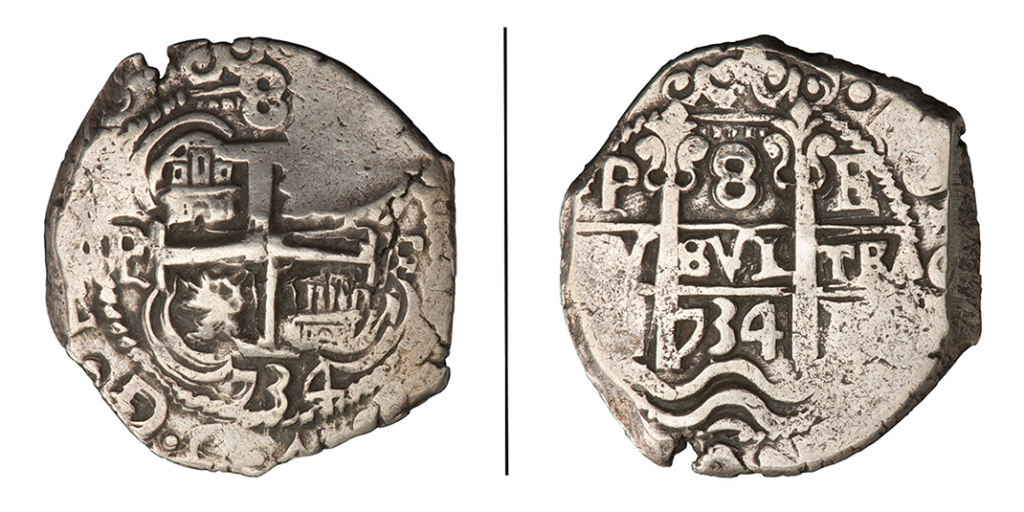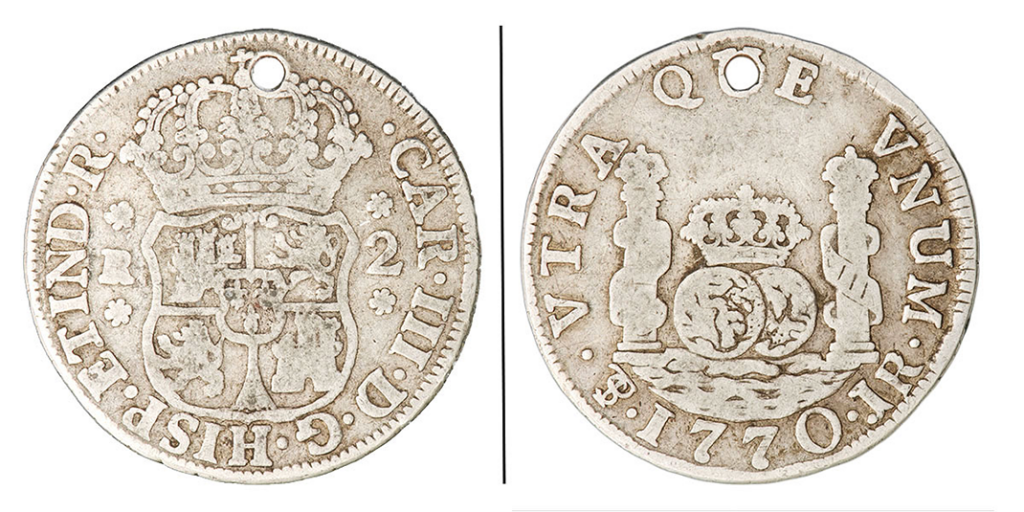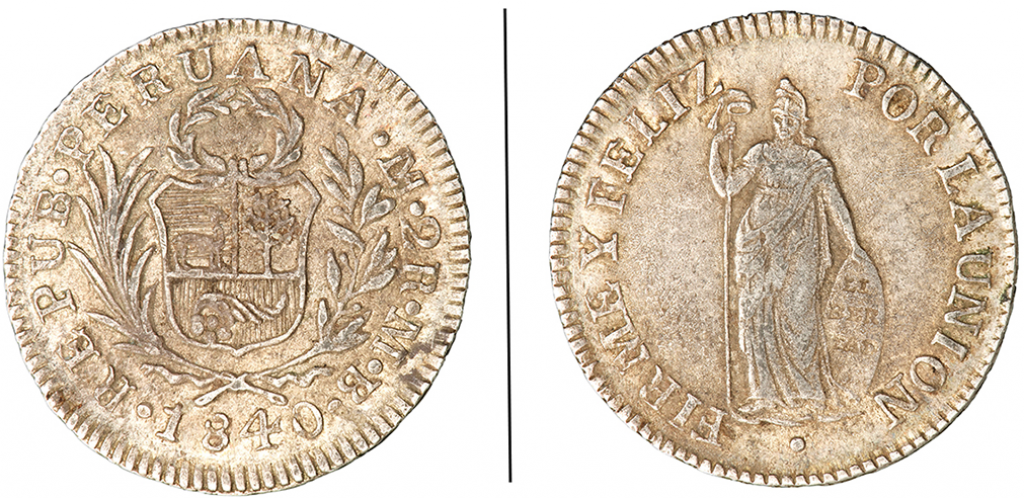Everyone loves getting presents, and we’re no exception. We recently received a very exciting donation of 50 silver coins. The collection—which includes Spanish colonial cobs, Spanish silver coins and Peruvian Republican coins—was purchased in Lima, Peru, at an estate sale in the 1950s.
Spanish colonial cobs, circa 1586-1762. NCC2015.7.1-8
Often associated with pirate treasure, cobs are irregularly shaped coins produced in Spain’s American colonies beginning in the 16th century and continuing into the 18th century. The colonial mints didn’t have the equipment to mill fine, round coins, so they sliced pieces off a rounded metal bar and stamped them by hand instead. Some of the coins depict the Pillars of Hercules—the rocks on either side of the Strait of Gibraltar—which represented Spain’s expansive global empire. Some people believe that the ribbon-wrapped pillar is the origin of the dollar symbol.
Spanish colonies, 8 reales cob or ‘piece of eight’, minted in Potosi, Bolivia, 1734. NCC2015.7.8
Eventually, the colonial mints received the tools to produce uniform, round coins. A number of the coins in the donation have holes punched in them. The donor was told that the holes were made to string the coins together to keep them secure on perilous road journeys. In some cultures around the world silver coins have been sewn onto clothing as decoration and a store of value. Our curators will be trying to find out more about these coins and how they were used.
Spanish colonies, holed 2 reales, minted in Potosi, Bolivia, 1770. NCC2015.7.11
Many Spanish colonies fought for their independence throughout the 19th century. In 1826, the Republic of Peru began to mint its own coins that celebrated its hard-won freedom. Instead of Latin, the inscriptions on these new coins were in Spanish. The reverse of the coin shown here depicts Liberty, in the form of woman wearing a helmet and holding a spear and a shield. On the obverse is the Peruvian coat of arms divided into three sections that depict a vicuña (an animal similar to a llama), a cinchona tree (source of the anti-malarial drug quinine) and a cornucopia overflowing with coins. Today, the same coat of arms appears on Peru’s coins and national flag.
Republic of Peru, 2 reales, minted in Lima, 1840. NCC2015.7.21
The Bank of Canada Museum receives many offers of objects for the Collection, but unfortunately we cannot accept them all. Our vault space is limited, and every object requires the same amount of time and care—no matter how small or ordinary. If you have something that you would like to donate to the National Currency Collection, please contact the . Please do not send any objects to us directly.
The Museum Blog
Whatever happened to the penny? A history of our one-cent coin.
By: Graham Iddon
Good as gold? A simple explanation of the gold standard
By: Graham Iddon
Speculating on the piggy bank
By: Graham Iddon






